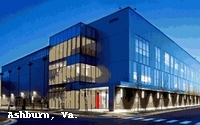 I’ve always known how important infrastructure was for the advertising business, but I’ve never thought about the plumbing of media planning and buying
more than since I began covering the programmatic trading marketplace, where fractions of seconds can mean lost bidding and winning opportunities and, potentially, millions or billions of dollars. So
I’m finding myself taking more meetings discussing things like data centers, and learning new terms like “dark fiber,” and why they’re changing the way people buy and sell
media. I had an especially geeky conversation on these topics last week with Robert Blackburn, who oversees North American sales for a company most of you have probably never heard of, but will more
and more, Equinix.
I’ve always known how important infrastructure was for the advertising business, but I’ve never thought about the plumbing of media planning and buying
more than since I began covering the programmatic trading marketplace, where fractions of seconds can mean lost bidding and winning opportunities and, potentially, millions or billions of dollars. So
I’m finding myself taking more meetings discussing things like data centers, and learning new terms like “dark fiber,” and why they’re changing the way people buy and sell
media. I had an especially geeky conversation on these topics last week with Robert Blackburn, who oversees North American sales for a company most of you have probably never heard of, but will more
and more, Equinix.
advertisement
advertisement
Equinix is one of the leaders in the field of “data interconnection,” and the reason most people on Madison
Avenue have never heard of them, is that until recently, the speed and reliability of their systems weren’t needed in the ad business. It focused on industries where super-fast data transmission
was imperative -- and where lots of money was at stake. Think high-speed Wall Street trading systems. But now that Madison Avenue is getting hooked on that kind of speed, Equinix, not surprisingly, is
moving into that space as well. This week, it is unveiling Ad-IX, its code name for its high-speed data solutions for Madison Avenue.
According
to Blackburn, more than 85 ad tech firms are now utilizing at least some part of the Ad-IX infrastructure, including such biggies as MediaMath, Casale Media, AdJuggler, BrightRoll and RocketFuel. The
reason, says Blackburn, is the same competitive advantages that come from margins of difference on Wall Street are becoming an issue on Madison Avenue.
He cites a well-documented study Equinix conducted with BrightRoll, the so-called “Video RTB+” case study my colleague Tyler Loechner wrote about in April, which showed that seemingly small reductions
in data transmission time equals big bucks. Specifically, he said “eliminating the bottlenecks” of RTB data transmission boosted bidding response rates from 2.4% to 3.5%, which may not
seem like much, bu it was 50% improvement that meant publishers participating in RTB auctions were getting 50% more bids in the same time frame.
“If I get 50% more bids, the yield is going to build,” Blackburn explains.
How to you get rid of those bottlenecks and
improve the speed of data transfer? That’s where black fiber comes in. It’s a techie term for jacking the data directly into Equinix’s systems vs. pumping it through public ISPs. And
it works best when the data being jacked is within a close physical proximity of the systems they’re jacking into, so Blackburn says the trend is for big ad tech companies to relocate their
trading systems directly onto the premises of Equinix’s data centers. It’s biggest, currently is in Ashburnn,Va., but Equinix also has data centers in all of the major national and
international trading hubs, because more and more of media trading is taking place internationally.
I learned as much from Rubicon
International’s Jay Stevens while he visited at OMMA Global last week, but that’s another RTBlog waiting to be written. Meanwhile, I’d like to remind you of something his
commander-in-chief, Rubicon founder Frank Addante, pointed out to me
a few months back, asking me why the floors above and below the Nasdaq exchange in New York City were some of the most expensive real estate in the world. It was, he said, because of the role
proximity plays in improving data transmission speeds and reliability. It’s something Rubicon is investing in, and a lot of other third parties are as well, albeit through Equinix.